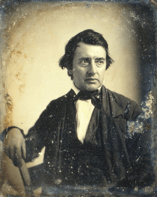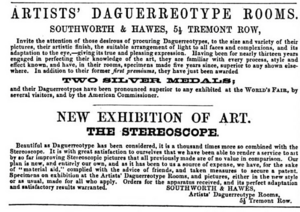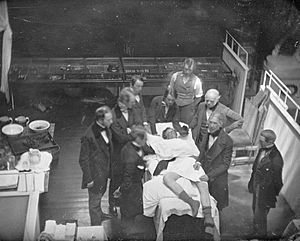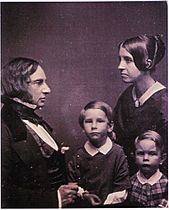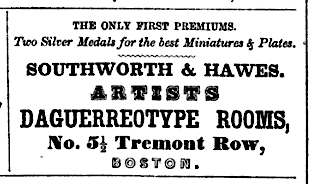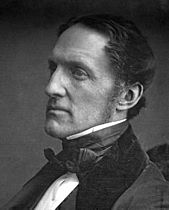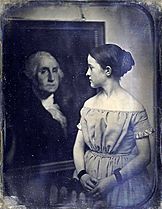- This page was last modified on 17 October 2025, at 10:18. Suggest an edit.
Southworth & Hawes facts for kids
Southworth & Hawes was a famous photography company in Boston from 1843 to 1863. The partners, Albert Sands Southworth and Josiah Johnson Hawes, are known as the first great American photography masters. They made photographic portraits into a true art form. Their amazing pictures are featured in all major books and collections about early American photography.
Southworth & Hawes mostly used a special method called daguerreotype. This was an early type of photography that created a detailed, mirror-like image on a silver-plated copper sheet. Their pictures were often large, about 8 ½ x 6 ½ inches. They were very bright and showed fine details.
A photographer named Marcus Aurelius Root praised their work in 1855. He said their style was unique, showing beautiful light and shadows. He also noted how soft and rich their pictures looked. This made them very popular with artists and experts. Root also mentioned that the company focused mainly on daguerreotypes, not on paper photos.
Contents
History of the Photography Studio
Pictures of Famous People
For 20 years, Southworth & Hawes took pictures of important people in Boston. They also photographed many famous figures. Their ads explained that different types of portraits were needed for different purposes.
For example, a picture for family or close friends should look friendly and happy. But a picture for the public, like for a leader, could look more serious or strong. Some of the well-known people they photographed included Louisa May Alcott, Ralph Waldo Emerson, Jenny Lind, Henry Wadsworth Longfellow, and Harriet Beecher Stowe.
Recording the First Anesthesia Surgery
On September 30, 1846, a dentist named Dr. William Thomas Green Morton used nitrous oxide to pull out a patient's tooth without pain. A few weeks later, on October 16, Dr. Morton publicly showed how to use ether to make a patient sleep during surgery. This happened at the Massachusetts General Hospital. Dr. John Collins Warren, a top surgeon, then removed a tumor from the patient's neck.
This was a huge moment in medicine. Southworth & Hawes were asked to take a picture of this important operation. However, Hawes found the sight of blood difficult. So, they photographed a re-enactment of the surgery instead.
Later, on April 3, 1847, Southworth & Hawes were called back to photograph a real operation. The patient was again under ether. Dr. Warren was so thankful for their work that he gave Hawes the surgical tools he used in the first operation.
Where the Photos Went
Josiah Johnson Hawes lived until 1901. He continued to run his studio and carefully protected their large collection of photos. This collection was finally divided up during the Great Depression (a time when many people had little money).
Most of their photos ended up in three major museums. These are the George Eastman Museum, the Metropolitan Museum of Art, and the Museum of Fine Arts, Boston. Only a few of their pictures were owned by private collectors. However, in 1999, a hidden collection of 240 Southworth & Hawes daguerreotypes was found. They were sold at an auction for $3.3 million!
Image gallery
-
Ralph Waldo Emerson, 1857
-
William Hickling Prescott, around 1850
Museums with Southworth & Hawes Photos
- American Museum of Photography
- Amon Carter Museum in Fort Worth, Texas
- Boston Athenæum
- George Eastman Museum
- Historic New England
- Metropolitan Museum of Art
- Museum of Fine Arts, Boston


